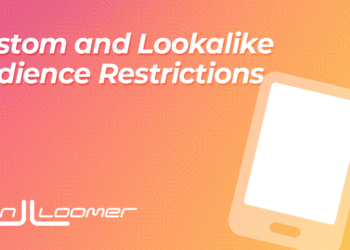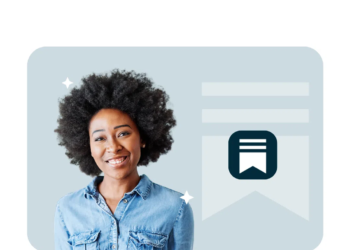If you’re a Meta advertiser, you can’t escape the word “Andromeda” right now. It’s flipped advertising strategy on its head, as long-time advertisers scramble to adjust.
The truth is that far too many advertisers and gurus are using the word “Andromeda” as a buzzword catch-all. Every change and every struggle with results seems to be attributed to Andromeda. I’m convinced that most people who use the word have no idea what it actually means.
If you need a summary to understand Andromeda, read my blog post. But there was one official recommendation that came from this that is particularly important to leveraging Andromeda: Creative diversification will help advertisers get the best results.
But what does “creative diversification” actually mean, and what does that look like for a more modern advertising approach?
Let’s break down what it means in practice, why it matters, and how you can apply it to your campaigns.
Why is Creative Diversification Important?
Of course, we also need to understand the “why” of creative diversification. While we should prioritize it because Meta says it will help us get better results, it’s important to understand why that would be the case in this new environment.
1. Optimize at scale.
Let’s consider an extreme example where you do not provide a diverse set of creative. You create one ad that leverages a static image and a single primary text, headline, and description.
You have given Meta very few assets to work with. You’re betting your entire budget on that text and copy. If you’re getting bad results, Meta’s delivery systems have very few options available to help improve them.
But if you give Meta diverse creative, the ad delivery system has plenty to work with. Meta can choose from different formats depending on what is most likely to generate results based on the person or placement. Meta can show completely different versions depending on who is seeing your ad and where they’re seeing it.
Additionally, the delivery algorithm can adjust as things change. More of your budget may have been spent on a specific image for the first few weeks, but that can shift to a different image later on.
By focusing on creative diversification, you are giving Meta options. This allows Meta to optimize at scale.
2. Prevent creative fatigue.
If you only submit a single image, one person might see that image over and over again. It eventually becomes noise and they’ll ignore it, resulting in wasted ad spend. This is creative fatigue. Fatigue doesn’t mean your creative is bad; it means your audience has seen it too often.
But if you give Meta several distinctly unique options to work with, fatigue is much less likely to become an issue. One person may see several very different ad versions.
Read my blog post on how to prevent creative fatigue here.
3. Reach diverse groups of people.
This is the part that most long-time advertisers struggle with.
In the past, the focus was on targeting inputs to control who might see your ads. We’d focus on demographics, custom audiences, lookalike audiences, and detailed targeting. But now, many of these levers are only used as audience suggestions. And even if you can restrict your audience, it’s rarely the right thing to do.
And the response is almost always a version of this: Well, how would I make sure the right audience sees my ad?
You do this with your ads. Create images, videos, text, and offers that appeal to your target demographic. Be very specific about the problems and pain points your ideal customer deals with. And show them how your product solves those problems.
But don’t focus on a single demographic. Most products have a range of customer personas that they can appeal to who have slightly different pain points.
Generic ads focused only on features won’t help you reach your ideal customer. Speak to these people about the things they care about most and using the language that they understand. Creative diversification effectively replaces what audience targeting used to do.
Meta Resources
Here are some sources straight from Meta on this topic if you care to dig deeper:
Example #1: Different Ads with Distinctly Different Visuals
The vast majority of advice I’ve seen around leveraging Andromeda focuses on creating more ads. Instead of sticking to the prior recommended ad limit of six, many advertisers are going with 10, 20, or even more.
But more isn’t necessarily better. If you create more ads, they also need to represent a more diverse group of creative.
Let’s say that you’ve created different ads using different images. Is that an example of creative diversification?
Not necessarily. Here’s one example from Meta:

You can have two different images that actually look very similar. Unless they’re distinctly different enough, any variation is unlikely to make a meaningful impact on performance.
If you’re giving Meta options, you want the options to be noticeably different. Otherwise, it’s not much different than providing multiple ads with the same image.
Example #2: Different Ads Leveraging Different Formats
It’s important to remember that different people respond to different things. But there’s also a matter of different formats not always being the right option for a specific placement.
To address this, you should provide Meta with a variety of format options. Include videos, static images, and carousels. And make sure that even if you’re using different formats, each creative should look distinctly different.
Here’s an example from Meta:

In theory, you could handle much of this within a single ad by customizing by placement. Provide videos for video-first placements, but also provide the right aspect ratio to make use of 9×16 or 4×5 depending on the placement.
Think about it like this. If your ideal customer regularly views Reels and Stories, the best way to reach them may not be with a 1×1 static image. If it’s an image, the ideal size would be 9×16. If it’s a video, it’s also 9×16, but you’ll typically want it under 15 seconds.
That said, how someone consumes content may look completely different if viewing from the feeds. And how they consume could be different based on the feed (Facebook, Instagram, or Threads).
That doesn’t mean you need the perfect version for every placement. There isn’t a perfect version. You create multiple ads to provide many options that can work depending on the format and placement.
Example #3: Flexible Format or Dynamic Creative
We’re focused on providing Meta with a diverse group of creative assets by format and visual style. That could be accomplished by creating several ads. But it may not be necessary.
If you use Flexible Format or Dynamic Creative, you could provide up to 10 images or videos within a single ad. Meta will mix and match by showing different creative with different text, depending on the person and placement.

Flexible Format takes it a step further by generating a carousel out of the creative you provide. You could technically knock out all of the requirements of creative diversification with a couple of ads.
I’m actually doing a version of this right now. I have two ads in an ad set using Flexible Format, both with 10 creatives. But one of the ads uses images while the other uses videos.

One of the challenges of Flexible Format, of course, is the lack of customization of creative. You can’t customize by each placement to make sure it looks the way you want. My way around that is using 9×16 creative that can be cropped down to 1×1 where necessary.
The bottom line is that you don’t necessarily need to create a bunch of ads to satisfy creative diversification. You want to provide several options, and there are ways to do that with only a handful of ads.
Example #4: AI-Generated Images and Backgrounds
I know, I know. Everyone hates Meta’s AI-generated images. But know that this is a way to very quickly and easily contribute to creative diversification.
When you upload new creative while building a single image ad, Meta will recommend some AI-generated versions that were inspired by your original creative.

Or if you’re highlighting a product, AI-generated background variations may be a safer bet.

Once you’ve selected a handful of these, they will be included among the options. This will help prevent creative fatigue and may even improve performance.

There’s a breakdown that helps show how these AI-generated images perform. In this example, the AI-generated backgrounds actually outperformed the original.

Example #5: Accept Related Media
When you create an ad that promotes something you’ve promoted before, Meta will surface “related media” that you can add as creative options. These are images and videos that you’ve used in other relevant ads.

You can add up to 10 images and videos of related media to a single ad. More options for Meta’s delivery algorithm and more ways to reach your ideal customer with the right version in the placement they’re viewing your ad.
If you select related media in addition to AI-generated images, you could technically add up to 20 creative variations on top of your original upload.
As is the case with AI-generated creative, there’s a breakdown to view how these perform.
Example #6: Advantage+ Creative Enhancements
Meta offers a constantly growing list of potential enhancements that can be applied to your ads. Here are some examples:
Most advertisers assume that if you accept these enhancements, they’ll be applied to your ads in all cases. But that’s not what happens. By turning these enhancements on, it gives Meta the option to show a new version to people if it will improve performance.

But it will depend on the person and placement. It won’t happen all the time. This essentially generates a new version of your ad that contributes to creative diversification.
Example #7: Primary Text and Headline Variations
Creative diversification isn’t only about images and videos. It’s also about providing diverse text.
If you’re creating multiple ads, Meta recommends using unique text for each one. The differences in text should be significant, not subtle.
Here’s an example from Meta:

You should tailor text to the customer persona, pain point, or angle you’re highlighting.
While those differences should exist from ad to ad, you can also provide variations within a single ad. You can provide up to five primary text variations for one ad.

You can also provide five headline variations.

In fact, you can provide an additional five if you accept or edit Meta’s AI-generated text options.

Each text variation creates a potential version of your ad. You’re providing Meta with assets so that the options are available to assemble the perfect ad for the right person in the right placement.
It’s a Big Adjustment
I will be the first to admit that this is a very big adjustment. If you have historically focused on all of the levers you can pull in the campaign and ad set to improve performance, it can be challenging to shift your focus to copy and creative.
Of course, we’re not just talking about focusing on creating a single ad. You need to properly plan and have the resources available to create many versions of copy and creative.
And that’s hard. While I’m much more focused on ad copy and creative now and I’ve experimented quite a bit with many of these strategies, I still struggle to come up with distinctly unique creative across formats. Instead, I usually focus on one style at a time while experimenting with multiple formats and text options.
So, don’t allow this to overwhelm you. It doesn’t need to be perfect. If you have the creative resources to really knock this out, do it. Otherwise, there are plenty of quick ways to generate countless variations to help contribute to creative diversification.
And that should be your goal here. Give Meta more options. If you avoid Advantage+ Creative enhancements, AI-generated creative, text variations, or any of these other features, make sure you have a very good reason why. Otherwise, you’re just eliminating tools that could make creative diversification a whole lot easier.
Start small, focus on providing a few meaningful variations, and expand as you see results.
My Resources
Here are a few more resources I’ve created that can help dig a little deeper on this topic:
Your Turn
What strategies are you using to help leverage Andromeda and creative diversification?
Let me know in the comments below!
















